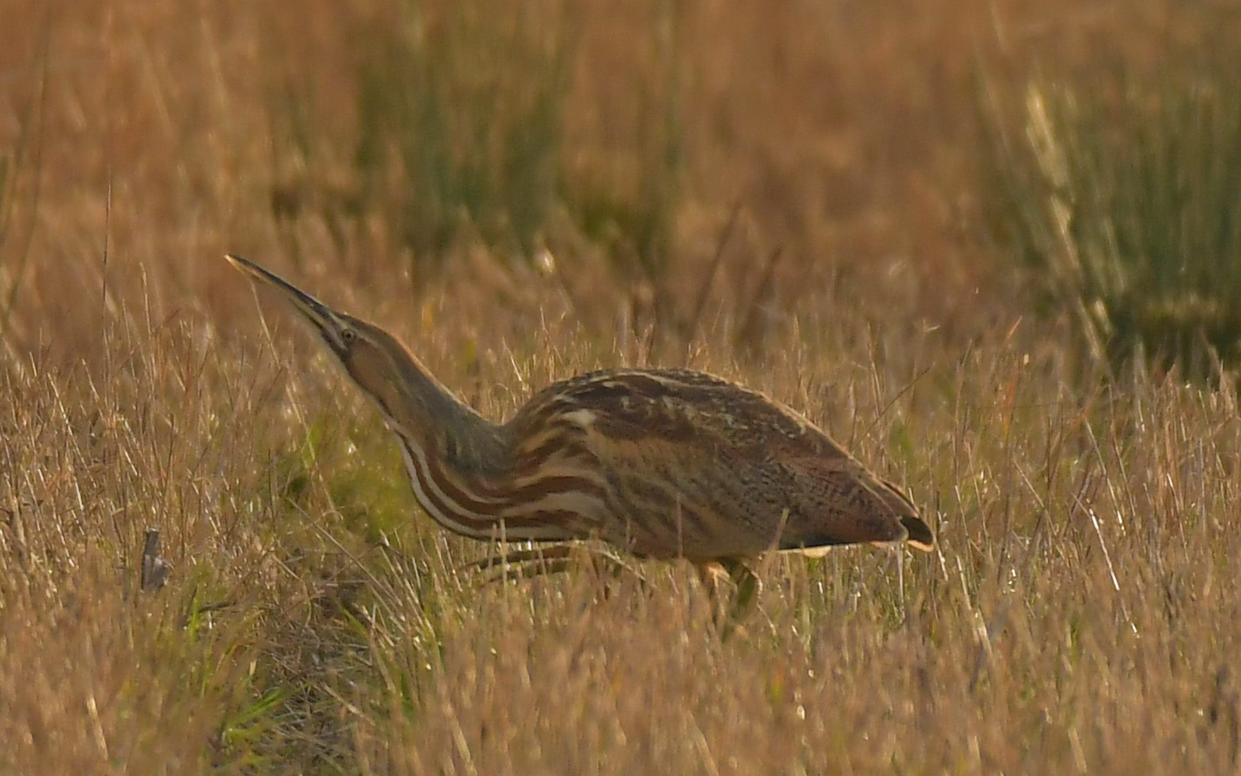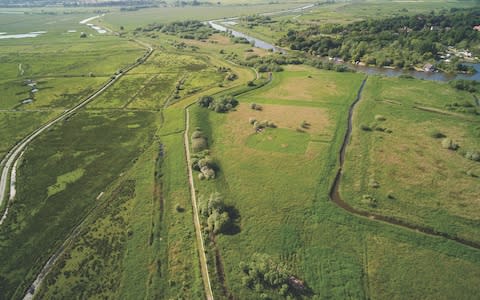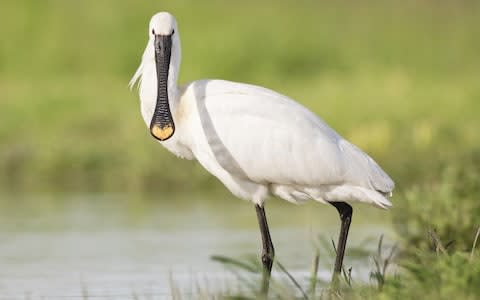Rare American Bittern sparks 'mega-twitch' in Suffolk

The arrival of a rare American Bittern to Britain has sparked a ‘mega-twitch’ with thousands of birdwatchers descending on the Suffolk broads to catch a glimpse of the elusive visitor.
It is the first time in eight years that the bird has been sighted in the UK, with ornithologists speculating it was blown off course on its annual migration between North America and the Gulf of Mexico.
The American bittern, is usually difficult to spot because it is so well camouflaged with its tawny brown feathers which provide a perfect disguise at the edges of marshes and lakes.
Like the native European bittern, it’s loud booming call is usually the first hint that it is present.

Birders took to Twitter to post their images of the. Andy Hale said he had caught sight if the bird after 30 hours of waiting, while David Walsh said it had taken three visits to the marshes and 15 and a half hours of watching.
Mr Walsh said: “I finally saw the American Bittern at Carlton Marshes - a lengthy flight view in good light towards the SE corner of Share Marsh. What a relief.”
The bittern has also chosen to land on the site on Britain’s newest national nature reserve.
Today, Suffolk Wildlife Trust was awarded more than £4 million from the Heritage Lottery Fund (HLF) to put 348 acres of land surrounding Carlton Marshes to create an 1,000 acre wild landscape.
Sir David Attenborough, President Emeritus of The Wildlife Trusts, who supported the bid said: “England’s wildlife is under great and ever-growing pressure.
“It is vital that we restore our land on a landscape scale so that it can support more wild plants and animals.
“Suffolk Wildlife Trust’s ambition to extend Carlton and Oulton Marshes is a unique opportunity to do just this and it has my whole-hearted support.”

The whole project will cost around £8 million with a further £4 million coming from the Trust through legacy gifts, volunteer time and the ongoing public fundraising campaign – which is now just £95,000 away from the £1million target.
The process of restoration and habitat creation is due to begin soon and by 2022 when the new visitor centre is complete, the whole of the western fringe of Lowestoft will have been transformed into a watery landscape.
More than 150 acres of marsh, fen meadow and shallow pools will be created, to provide a wintering ground wildfowl and nationally declining waders like lapwing and redshank.
Julian Roughton, Chief Executive of Suffolk Wildlife Trust, says: “The support from the HLF means that Suffolk Wildlife Trust can now begin restoring this precious part of East Anglia and create a place where wildness spreads as far as the eye can see.
“This nature reserve will be now safeguarded forever, providing homes for some of the UK’s most iconic species.”
To donate to the campaign and help raise the last £95,000 visit www.suffolkwildlifetrust.org

 Yahoo News
Yahoo News 
